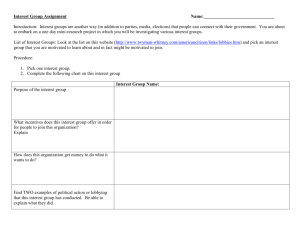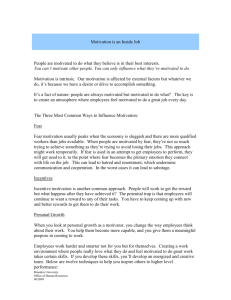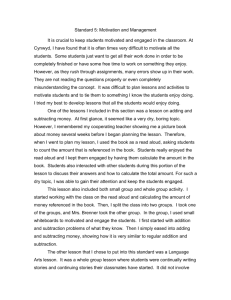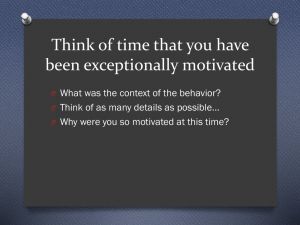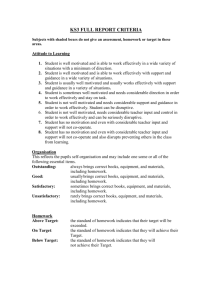Motivation - Anderson High School
advertisement
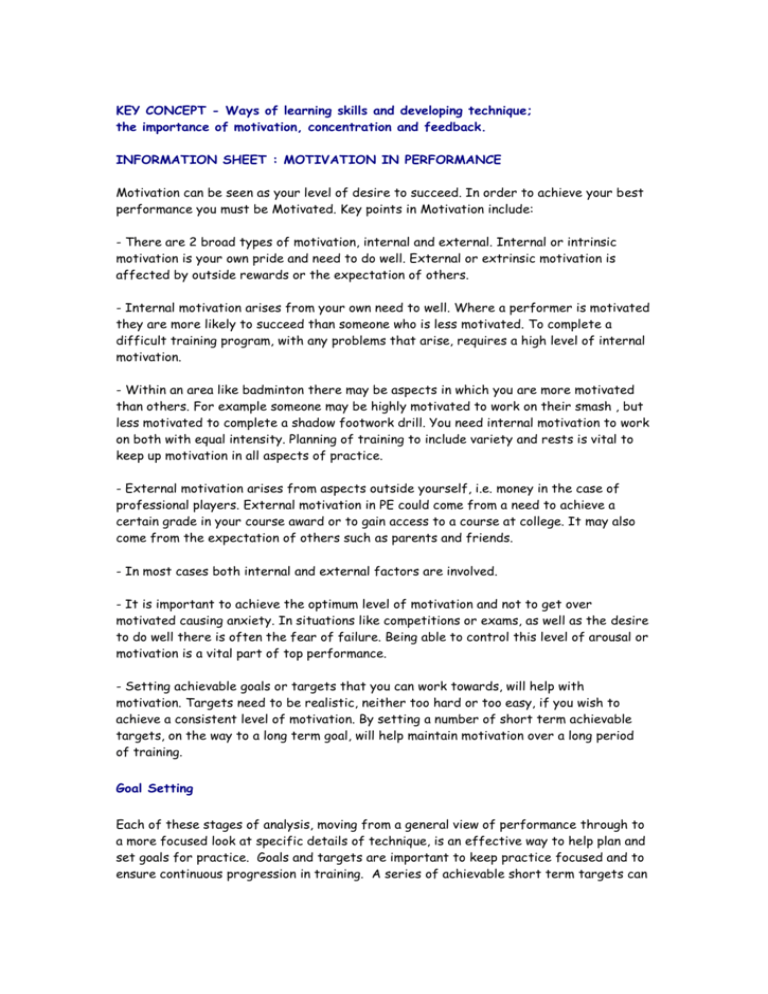
KEY CONCEPT - Ways of learning skills and developing technique; the importance of motivation, concentration and feedback. INFORMATION SHEET : MOTIVATION IN PERFORMANCE Motivation can be seen as your level of desire to succeed. In order to achieve your best performance you must be Motivated. Key points in Motivation include: - There are 2 broad types of motivation, internal and external. Internal or intrinsic motivation is your own pride and need to do well. External or extrinsic motivation is affected by outside rewards or the expectation of others. - Internal motivation arises from your own need to well. Where a performer is motivated they are more likely to succeed than someone who is less motivated. To complete a difficult training program, with any problems that arise, requires a high level of internal motivation. - Within an area like badminton there may be aspects in which you are more motivated than others. For example someone may be highly motivated to work on their smash , but less motivated to complete a shadow footwork drill. You need internal motivation to work on both with equal intensity. Planning of training to include variety and rests is vital to keep up motivation in all aspects of practice. - External motivation arises from aspects outside yourself, i.e. money in the case of professional players. External motivation in PE could come from a need to achieve a certain grade in your course award or to gain access to a course at college. It may also come from the expectation of others such as parents and friends. - In most cases both internal and external factors are involved. - It is important to achieve the optimum level of motivation and not to get over motivated causing anxiety. In situations like competitions or exams, as well as the desire to do well there is often the fear of failure. Being able to control this level of arousal or motivation is a vital part of top performance. - Setting achievable goals or targets that you can work towards, will help with motivation. Targets need to be realistic, neither too hard or too easy, if you wish to achieve a consistent level of motivation. By setting a number of short term achievable targets, on the way to a long term goal, will help maintain motivation over a long period of training. Goal Setting Each of these stages of analysis, moving from a general view of performance through to a more focused look at specific details of technique, is an effective way to help plan and set goals for practice. Goals and targets are important to keep practice focused and to ensure continuous progression in training. A series of achievable short term targets can link together to achieve a larger medium term goal, which in turn build towards the long term aim of improved performance. In the long term the goal is to improve overall game performance perhaps with competition in mind. The general analysis will help set medium term targets to improve certain aspects of play. The more focused analysis will help with short term plans and give clear purpose to individual practice sessions. When setting goals and targets, using the example of S.M.A.R.T.E.R. can help make these more effective. You should try and ensure that each target conforms to the following: SMARTER- Specific. Measurable. Achievable. Realistic. Timescale. Evaluated. Recorded. Monitoring / evaluating the effectiveness of training. Why monitor? To ensure training stays on track and focused on improving identified weaknesses, it is important to continually monitor progress. Recording features of practice and performance can help show up problems or highlight where progress has been made. In this way training can be altered to ensure smooth progression. For example it improvements are noted, training can be made more difficult to take this into account. If no checks were made time could have been wasted on practices that were either too difficult or easy. At the end of a period of training monitoring can compare performances to show if progress has been made and highlight further areas for development. In this way new targets can be set for the next period of training.
